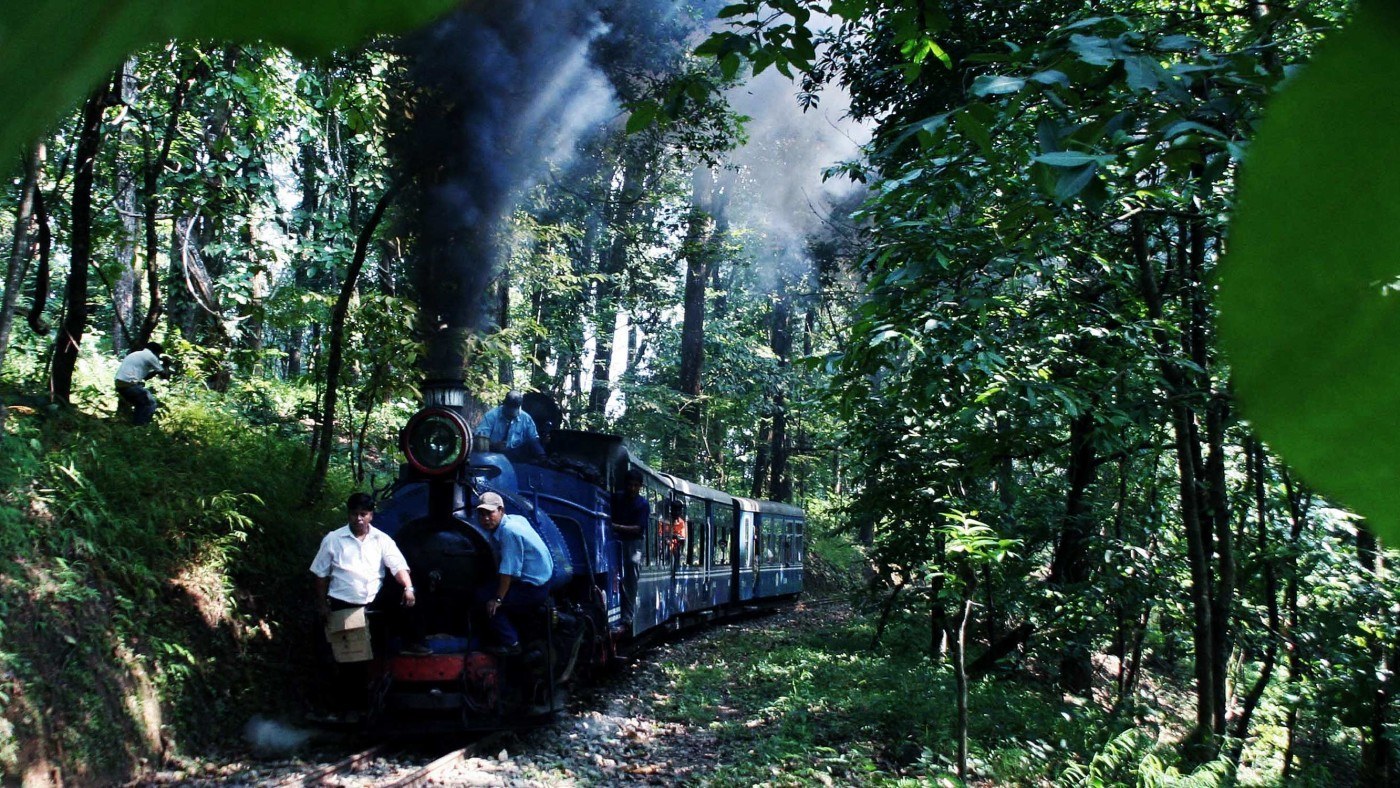For travellers heading into the Himalayan foothills around Darjeeling in northern India, one of the most iconic sights is the Darjeeling Himalayan Railway. The ‘Toy Train’, as it is known, has chugged its way up the steep and twisting mountain passes since 1881 providing a vital economic lifeline to one of the most remote parts of India. The train, which at times seems to defy the laws of physics (and almost certainly health and safety recommendations) last month reopened along its full route after five years running only partially due to a landslide in June 2010.
The Indian government’s keenness to encourage tourists to make use of the line manifests itself in a curious video by the Indian tourist board. The film cheerfully warns watchers that in poor conditions two men have to sit at the front of the train and throw sand onto the tracks to prevent it from sliding off the rails as it picks its way precariously along sheer cliff edges. Rather ominously a government pamphlet about the line said vaguely that an attempt to reopen the line was made last year but was ‘unsuccessful’.
However if you can overcome the fear and put your trust in some creative British/Indian engineering, then the Toy Train is the most evocative way of getting from the lowlands of West Bengal to the tea plantations of Darjeeling, nestled in the shadow of the world’s third highest peak – the spectacular Mount Kanchenjenga. What is striking about the railway line is the number of little shops and stalls which line the route selling everything from fresh fish and chickens to pashminas and down jackets to keep out the cold. Seemingly hundreds of the little stores, each representing an entrepreneurial endeavour from one family or another, follow the steep route. The train passes so close, at times almost flush with the shop fronts, that passengers can peer right inside. Often the train has to stop, either to take on water, or for a herd of goats or a parked car to be to be moved off the tracks and the locals will take advantage of the delay and proffer goods through the windows.
The twin economic drivers of development here are tourism and tea and the Darjeeling Himalayan Railway (DHR) has seen both of them from their infancy. Built in 1879 by Gillanders Arbuthnot & Co the 50 mile narrow gauge railway climbs a total of 7000 feet from New Jalpaiguri to Darjeeling. Diesel locomotives pull most of the scheduled services but the daily run from Kurseong and the trains from Darjeeling to Ghum are still handled by the vintage B Class steam engines, built by Sharp, Stewart and Company and later the North British Locomotive Company. It’s quite a feat to be carried along by the same oily, smoke belching contraptions that have been toiling these Himalayan foothills for over a century.
The transport link transformed the fortunes of the area. W.B. Gladstone, the Chairman of the railway explained in 1896, that before the railway, travelling up into the hills was an arduous task. “The route from Calcutta to Darjeeling was by rail from Howrath to Sahibgani,” he said, “then by steam ferry across the Ganges to Carragola, thence by bullock cart to the river opposite Dingra Ghat; after crossing which again by bullock cart to Purnea, Kishanganj, Titalya and Siliguri whence the ascent commenced via the Pankhabari road to Kurseong. The whole journey took from five to six days and was about as exhaustible and uncomfortable a journey as can well be imagined.”
In 1999 the DHR became only the second railway to be given World Heritage Site status by UNESCO. Despite this attention the line is currently loss making. The trains are unreliable, last minute cancellations are not uncommon, and the scruffy carriages can kindly be described as ‘basic’. Described as having ‘battered charm’ by the railway’s quirky museum in Ghum, local business owners are keen to get their hands on the service and restore it to its former glories. Entirely owned by the Indian government, a local tea estate owner, Rajah Banerjee, has called for it to be privatised and is keen to pump in the required investment to bring back classic dining cars and station buffets. Last year he told the BBC: “Without investment it will die. But with investment it can strengthen tourism, and the whole community will benefit. And I can make that investment. But the government will not let me.” So far his attempts have been resisted by unions who are protective of the huge state-owned Indian Railways and its million strong workforce.
Whatever comes of Banerjee’s attempts to revive the line’s fortunes, for the time being the Toy Train continues its century-long uphill trundle ferrying people into the heart of one of the most beautiful natural wonders of the world. It’s worth a visit, if you can find a train that’s running.


